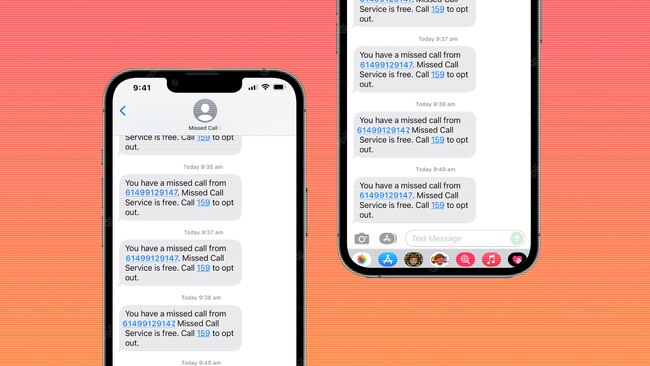Did you know this was abuse when it happened to you
A new report into technology-facilitated abuse speaks to male perpetrators as Australian women are pushed into the shadows.

A new report into technology-facilitated abuse speaks to male perpetrators as Australian women are pushed into the shadows.
Receiving dozens of calls, threatening text messages or having your tech tracked by an ex isn’t just OTT and irritating, it’s technology-facilitated abuse.
And a new report released on Thursday by women's safety experts has revealed that 50% of Australian women will be victims of this form of abuse in our lifetimes.
And for a lot of us, it will come from a former partner.
But one of the features of this particular study, conducted by Australia's National Research Organisation for Women's Safety, is that it doesn’t just draw from the experience of victims, but it delves into why perpetrators do it too.
Why are they using technology in this invasive way?
One person told the researchers: “It was just this sense of control of being able to know where they were, what they were doing, who they were with”.
Another said they felt they needed to “retain hold of that life”.
Yes, the theme, the organisation found, is a clear one: control.
And the stats show that when abusers “lost” that control, well, things went downhill.
“Perpetrators primarily identified feeling angry and upset as their main motivators for engaging in technology-facilitated abuse in the context of intimate partner relationships,” the report said.
“They attributed this anger to a loss of control at the end of a relationship and losing daily contact with the victim and survivor.”
Another abuser told researchers that they wanted so badly to get in contact with their female victim they called her “about 150 times” in a two hour period.
“She didn’t pick up, but I just kept doing that,” the perpetrator told researchers.
Almost one in three abusers said they thought the victim would “be ok with it. One in six thought their behaviour was “funny” and one in 10 thought their victim would be “flattered”.
ANROWS chief executive Padma Raman said the impacts of technology-facilitated abuse could include “physical, emotional and mental health harms as well as feelings of fear, paranoia and hyper-vigilance”.
“Victims and survivors explained that their experiences affected their ability to have personal and professional relationships with others, creating a sense of isolation,” she said.
The research also showed police, internet platforms and other service providers like the telcos. had inconsistent approaches to addressing abuse at best, and could just be a bit hopeless at worst.
“It is vitally important that essential services have a proactive, policy-driven approach to preventing and responding to technology-facilitated abuse,” Raman said.
“It is also crucial, for the purposes of risk assessment, that technology-facilitated abuse by a current or former partner is understood as a potential risk indicator for multiple forms of domestic and family violence.”
eSafety Commissioner Julie Inman Grant, who conducts a lot of research in this space and has powers to issue take down notices for things like the non-consensual sharing of images, said technology facilitated abuse made gender inequalities worse by discouraging women into pursuing positions of power where they could be more easily found and targeted online.
“Earlier research indicated that one in three professional Australian women have experienced some form of gendered online abuse and 25% of women won’t take job opportunities if they’re required to be in the media,” she said.
Inman Grant told The Oz the average age of victims when they first experienced abuse was about 14, but children as young as eight had been targeted.
“There’s been an 80% increase in youth based cyber bullying in the last six months of this year,” she said.
“We’ve seen and heard from the frontlines creative ways people misuse technology.”
Inman Grant said apps like UberEats were used by perpetrators to find out where their partner was, while others put threatening messages on banking transactions as a way to contact their victims.
But in good news, banks including CBA, recently installed Artificial Intelligence to identify and prevent such messages from being sent.
Inman Grant said she was concerned the number of women coming forward to report abuse to the eSafety Commission was only 2%.
Communications Minister Michelle Rowland urged people to take steps to protect themselves and urged those who have questions or concerns to get in touch with eSafety.
"eSafety offers these resources in twelve different languages as well as tailored resources for people with intellectual or cognitive disabilities," Rowland said.
If you, or someone you know, needs help call 1800 RESPECT.
If you, or someone you know, is experiencing cyber abuse head to esafety.gov.au



